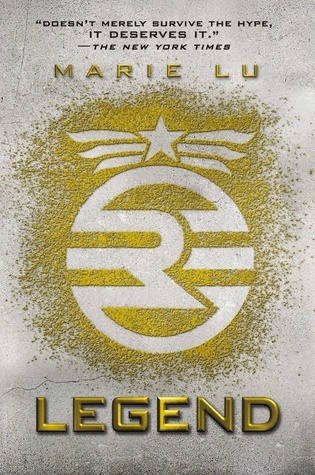409 Results in the "Science Fiction" category
Biography & Memoir (513)
Books Like (9)
Business & Finance (3)
Children’s Fiction (235)
Dystopian (30)
Education & Learning (26)
Fantasy (1832)
fashion (1)
Fiction (5578)
Health & Wellness (21)
Historical Fiction (662)
Horror (162)
Literary Fiction (1011)
Non-Fiction (1421)
Novel (240)
Others (106)
Philosophy (147)
Poetry (208)
Politics & History (126)
Posts (109)
Psychology (50)
Religion & Spirituality (1)
Romance Novel (771)
Science & Technology (65)
Self-Help & Personal Development (112)
The Ultimate Book Lists (1)
Thriller / Mystery (912)
Travel & Adventure (2)
True Crime (57)
view (96)
Young Adult (751)
-
Story
The Obelisk Gate
 The Obelisk Gate continues N.K. Jemisin’s Hugo Award-winning Broken Earth trilogy, plunging readers deeper into a world ravaged by apocalyptic climate disasters. As the Fifth Season—a catastrophic climate event—unfolds, the story follows: Essun, a grieving mother and powerful orogene, who seeks refuge in the underground comm of Castrima while hunting her daughter’s kidnapper. Nassun, Essun’s missing daughter, whose emerging powers draw her into a dangerous faction with…
The Obelisk Gate continues N.K. Jemisin’s Hugo Award-winning Broken Earth trilogy, plunging readers deeper into a world ravaged by apocalyptic climate disasters. As the Fifth Season—a catastrophic climate event—unfolds, the story follows: Essun, a grieving mother and powerful orogene, who seeks refuge in the underground comm of Castrima while hunting her daughter’s kidnapper. Nassun, Essun’s missing daughter, whose emerging powers draw her into a dangerous faction with…-
1.9 K • Jul 22, '25
-
2.2 K • Jul 22, '25
-
2.2 K • Jul 22, '25
-
-
Story
Rebel
 A decade after the events of Champion, Rebel reignites the Legend saga with a new generation of heroes—and villains. Set in the Republic-turned-united Antarctic States, the story follows: Eden Wing, Day’s brilliant but troubled younger brother, who resents his family’s legacy. Daniel “Day” Altan Wing, now a fading legend struggling with chronic illness and fatherhood. June Iparis, a high-ranking official balancing power and family loyalty. When Eden uncovers a…
A decade after the events of Champion, Rebel reignites the Legend saga with a new generation of heroes—and villains. Set in the Republic-turned-united Antarctic States, the story follows: Eden Wing, Day’s brilliant but troubled younger brother, who resents his family’s legacy. Daniel “Day” Altan Wing, now a fading legend struggling with chronic illness and fatherhood. June Iparis, a high-ranking official balancing power and family loyalty. When Eden uncovers a…-
2.2 K • Jul 22, '25
-
1.9 K • Jul 22, '25
-
2.3 K • Jul 22, '25
-
-
Story
Prodigy
 Prodigy is the gripping second installment in Marie Lu’s Legend trilogy, escalating the stakes in a dystopian war between the Republic and the Colonies. After their dramatic escape in Legend, June and Day join the rebel Patriot group, hoping to overthrow the Republic’s tyrannical government. But trust is fragile—June’s loyalty is questioned due to her elite past, while Day grapples with grief and the weight of becoming a…
Prodigy is the gripping second installment in Marie Lu’s Legend trilogy, escalating the stakes in a dystopian war between the Republic and the Colonies. After their dramatic escape in Legend, June and Day join the rebel Patriot group, hoping to overthrow the Republic’s tyrannical government. But trust is fragile—June’s loyalty is questioned due to her elite past, while Day grapples with grief and the weight of becoming a…-
2.2 K • Jul 22, '25
-
1.8 K • Jul 22, '25
-
2.0 K • Jul 22, '25
-
-
Story
Legend (Legend #1)
 Legend is the electrifying first installment in Marie Lu’s bestselling dystopian trilogy, set in a war-torn future where the United States has fractured into two warring nations: the oppressive Republic and the rebellious Colonies. The story unfolds through the dual perspectives of two unforgettable protagonists: June Iparis, a 15-year-old military prodigy from the Republic’s elite, groomed for success and loyalty to the regime. Day, the…
Legend is the electrifying first installment in Marie Lu’s bestselling dystopian trilogy, set in a war-torn future where the United States has fractured into two warring nations: the oppressive Republic and the rebellious Colonies. The story unfolds through the dual perspectives of two unforgettable protagonists: June Iparis, a 15-year-old military prodigy from the Republic’s elite, groomed for success and loyalty to the regime. Day, the…-
2.3 K • Jul 22, '25
-
2.1 K • Jul 22, '25
-
2.1 K • Jul 22, '25
-
-
Story
Champion
 Champion is the explosive finale to Marie Lu’s bestselling Legend trilogy, a dystopian saga blending political intrigue, high-stakes action, and heart-wrenching romance. Set in a fractured future where the Republic and Colonies wage a cold war, the story follows two iconic protagonists: June Iparis, the Republic’s brilliant prodigy turned rebel, now a high-ranking official struggling to prevent war. Day, the Republic’s most wanted criminal-turned-hero, whose deteriorating health…
Champion is the explosive finale to Marie Lu’s bestselling Legend trilogy, a dystopian saga blending political intrigue, high-stakes action, and heart-wrenching romance. Set in a fractured future where the Republic and Colonies wage a cold war, the story follows two iconic protagonists: June Iparis, the Republic’s brilliant prodigy turned rebel, now a high-ranking official struggling to prevent war. Day, the Republic’s most wanted criminal-turned-hero, whose deteriorating health…-
2.5 K • Jul 22, '25
-
2.2 K • Jul 22, '25
-
2.2 K • Jul 22, '25
-
-
Story
The Fifth Season
 The Fifth Season is the first book in N. K. Jemisin’s groundbreaking Broken Earth trilogy, a masterpiece that redefines epic fantasy. Set on a supercontinent called the Stillness, where catastrophic climate disasters (known as “Fifth Seasons”) regularly devastate civilization, the story follows three intertwined narratives: Essun, a woman searching for her missing daughter in a world collapsing into chaos. Damaya, a young girl with dangerous powers, taken…
The Fifth Season is the first book in N. K. Jemisin’s groundbreaking Broken Earth trilogy, a masterpiece that redefines epic fantasy. Set on a supercontinent called the Stillness, where catastrophic climate disasters (known as “Fifth Seasons”) regularly devastate civilization, the story follows three intertwined narratives: Essun, a woman searching for her missing daughter in a world collapsing into chaos. Damaya, a young girl with dangerous powers, taken…-
2.7 K • Jul 22, '25
-
2.3 K • Jul 22, '25
-
2.2 K • Jul 22, '25
-
-
Story
Gulliver of Mars
 Gulliver of Mars by Edwin L. Arnold is a science fiction novel that follows the adventures of a man named Gulliver who, after a mysterious journey, finds himself stranded on Mars, where he encounters strange alien life forms, advanced civilizations, and a series of thrilling challenges that test his courage and intellect. The novel combines elements of adventure, exploration, and social commentary, drawing inspiration from Jonathan Swift's *Gulliver's Travels* while offering a unique take on interplanetary exploration.
Gulliver of Mars by Edwin L. Arnold is a science fiction novel that follows the adventures of a man named Gulliver who, after a mysterious journey, finds himself stranded on Mars, where he encounters strange alien life forms, advanced civilizations, and a series of thrilling challenges that test his courage and intellect. The novel combines elements of adventure, exploration, and social commentary, drawing inspiration from Jonathan Swift's *Gulliver's Travels* while offering a unique take on interplanetary exploration.-
3.8 K • Nov 8, '24
-
4.0 K • Nov 8, '24
-
4.2 K • Nov 8, '24
-
-
Story
Insurgent
 “One choice can transform you—or it can destroy you. But every choice has consequences, and as unrest surges in the factions all around her, Tris Prior must continue trying to save those she loves—and herself—while grappling with haunting questions of grief and forgiveness, identity and loyalty, politics and love.” Tris Prior’s journey continues in this second installment of the Divergent series, where she faces even greater…
“One choice can transform you—or it can destroy you. But every choice has consequences, and as unrest surges in the factions all around her, Tris Prior must continue trying to save those she loves—and herself—while grappling with haunting questions of grief and forgiveness, identity and loyalty, politics and love.” Tris Prior’s journey continues in this second installment of the Divergent series, where she faces even greater…-
2.1 K • Jul 1, '25
-
2.2 K • Jul 1, '25
-
2.0 K • Jul 1, '25
-
-
 “Fans of the Divergent series will devour this collection of four prequel stories told from Tobias Eaton’s (Four) perspective. Discover how he became the enigmatic Dauntless leader—his initiation, fears, and the choices that shaped his identity before meeting Tris Prior.” This book delves into Four’s backstory, revealing his transition from the Abnegation faction to Dauntless, his struggles with authority, and his complex relationship with…
“Fans of the Divergent series will devour this collection of four prequel stories told from Tobias Eaton’s (Four) perspective. Discover how he became the enigmatic Dauntless leader—his initiation, fears, and the choices that shaped his identity before meeting Tris Prior.” This book delves into Four’s backstory, revealing his transition from the Abnegation faction to Dauntless, his struggles with authority, and his complex relationship with…-
2.1 K • Jul 1, '25
-
2.5 K • Jul 1, '25
-
2.4 K • Jul 1, '25
-
-
 “In Beatrice Prior’s dystopian Chicago, society is divided into five factions, each dedicated to the cultivation of a particular virtue—Candor (honesty), Abnegation (selflessness), Dauntless (bravery), Amity (peace), and Erudite (intelligence). On her Choosing Day, Beatrice must decide between staying with her family or embracing her true self. But her choice shocks everyone—including herself.” Tris Prior discovers she is Divergent—someone who doesn’t fit into any…
“In Beatrice Prior’s dystopian Chicago, society is divided into five factions, each dedicated to the cultivation of a particular virtue—Candor (honesty), Abnegation (selflessness), Dauntless (bravery), Amity (peace), and Erudite (intelligence). On her Choosing Day, Beatrice must decide between staying with her family or embracing her true self. But her choice shocks everyone—including herself.” Tris Prior discovers she is Divergent—someone who doesn’t fit into any…-
2.0 K • Jul 1, '25
-
2.1 K • Jul 1, '25
-
2.0 K • Jul 1, '25
-
- Previous 1 2 3 Next
